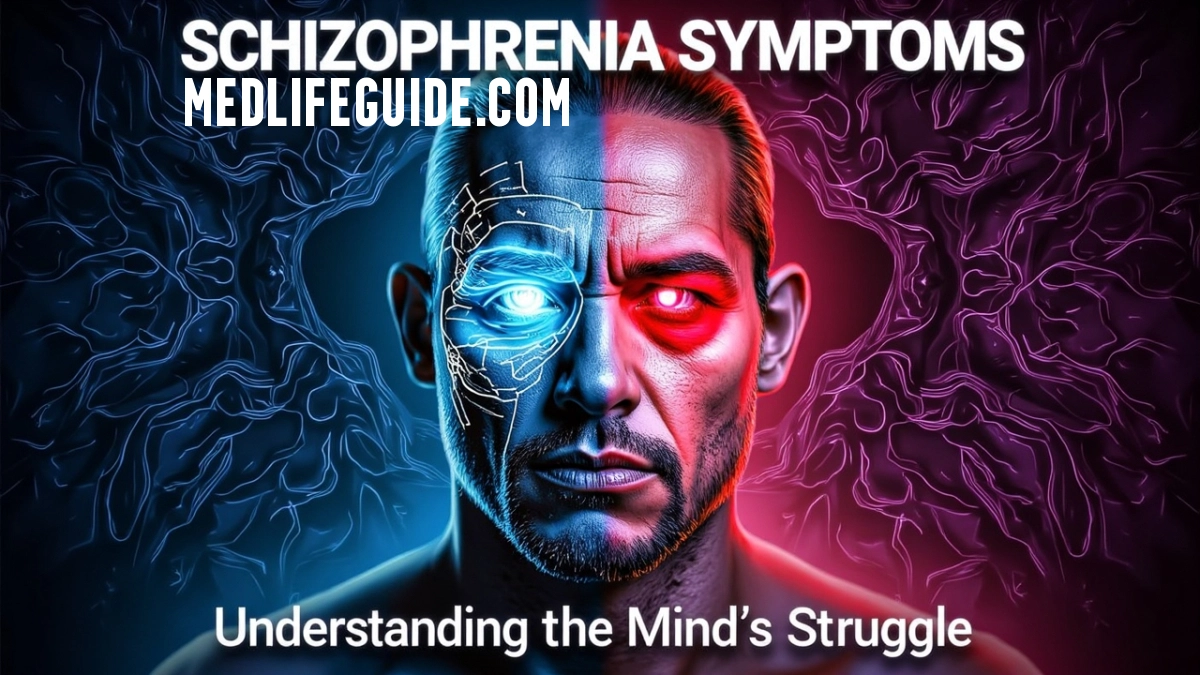Schizophrenia is one of the most misunderstood mental health conditions, often reduced to media stereotypes of “split personalities” or violent behavior. In reality, it’s a complex disorder with a spectrum of symptoms that affect thinking, emotions, and behavior. Recognizing these symptoms early can lead to better management and improved quality of life.
This article goes beyond the basics, exploring:
- The three main categories of schizophrenia symptoms
- Early warning signs often overlooked
- Debunking myths (No, schizophrenia ≠ multiple personalities!)
- How symptoms differ between men, women, and teens
- When to seek help and treatment options
The Three Core Types of Schizophrenia Symptoms
1. Positive Symptoms (Adding What Shouldn’t Be There)
These are the most recognizable but often misrepresented:
- Hallucinations (hearing voices, seeing things that aren’t real)
- Delusions (fixed false beliefs, like paranoia or grandiosity)
- Disorganized speech/thinking (jumbled words, rapid topic shifts)
Mythbuster: Not all hallucinations are scary—some people report neutral or even comforting voices.
2. Negative Symptoms (Losing What Should Be There)
Less talked about but equally debilitating:
- Flat affect (reduced emotional expression)
- Social withdrawal (avoiding friends, family)
- Avolition (lack of motivation, even for basic tasks)
Key Insight: Negative symptoms are often mistaken for depression, delaying proper diagnosis.
3. Cognitive Symptoms (The Hidden Struggle)
These impact daily functioning but are rarely discussed:
- Poor executive function (trouble planning, focusing)
- Memory lapses (forgetting recent conversations)
- Slow processing speed (taking longer to respond)
Early Warning Signs: What to Watch For
Schizophrenia rarely appears “out of nowhere.” Early signs may include:
- Social decline: Pulling away from hobbies or friends
- Unusual beliefs: Sudden interest in conspiracy theories
- Sensory sensitivity: Overreacting to lights or sounds
- Declining self-care: Skipping showers, wearing dirty clothes
Pro Tip: Teens may show milder versions (e.g., odd speech patterns), which are often dismissed as “phases.”
Gender & Age Differences in Symptoms
- Men: Typically show symptoms earlier (late teens/20s), with more severe paranoia.
- Women: Often diagnosed later (20s/30s), with stronger mood-related symptoms.
- Teens: May mimic ADHD (attention issues) or anxiety disorders.
When to Seek Help & Treatment Options
Early intervention improves outcomes. Consider professional help if:
- Symptoms last more than 6 months
- Daily life (work, relationships) is disrupted
- There’s a family history of schizophrenia
Treatment approaches:
- Medication (Antipsychotics, but side effects vary)
- Therapy (CBT, family therapy)
- Lifestyle adjustments (Structured routines, stress reduction)
Key Takeaways
- Schizophrenia symptoms go beyond hallucinations—negative/cognitive symptoms are equally impactful.
- Early signs are subtle; social withdrawal or odd speech may be red flags.
- Gender and age influence how symptoms appear.
- Treatment works best when started early—don’t wait for a crisis.

